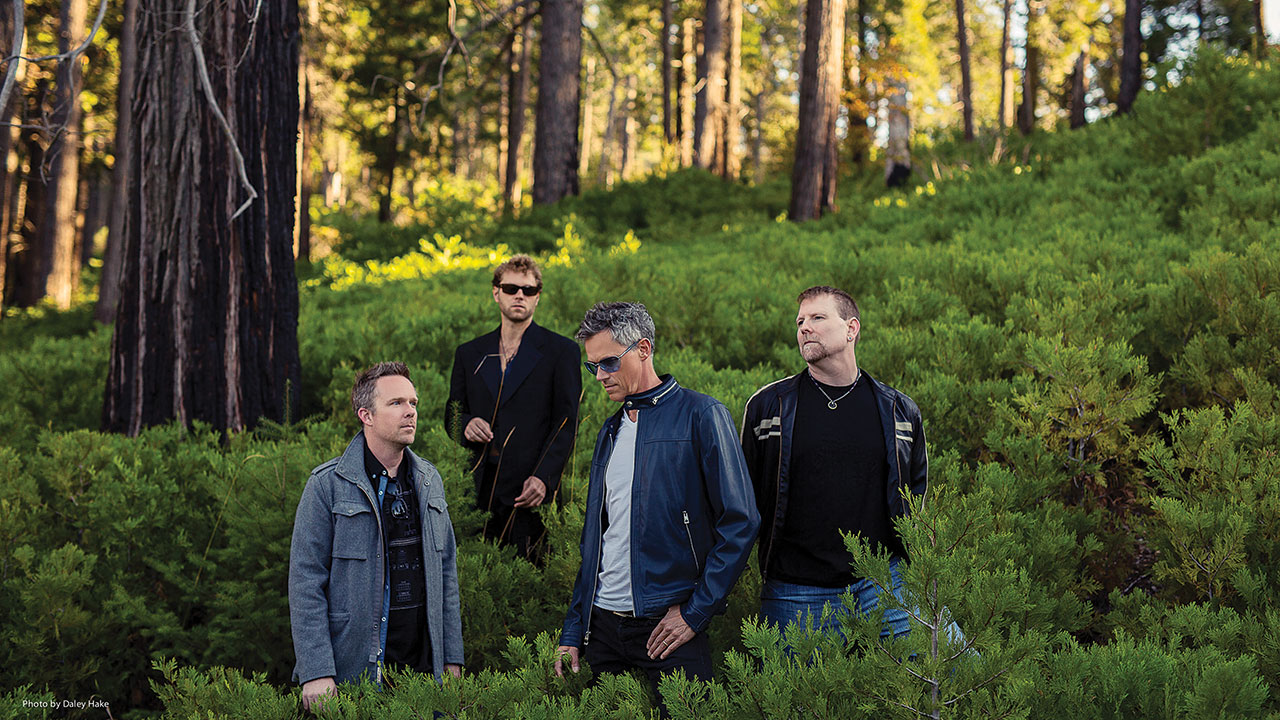
After two of their band members left the ranks, US prog rockers Perfect Beings faced the choice to fold or fly. As guitarist Johannes Luly told Prog in 2018, they chose to. spread their wing with Vier, their most ambitious work yet. Sadly, it would be the band's fonal album.
It might seem strange for Perfect Beings to name their third album Vier, which means four in German, but as with most things that the LA-based prog band do, there is meaning behind their madness.
After the release of their second album in 2015, the band went from a quintet to a trio following the departure of drummer Dicki Fliszar and bassist Chris Tristram. Rather than throw in the towel, Johannes Luley, Ryan Hurtgen and Jesse Nason vowed to press on and scale new heights.
“We were just regrouping after Chris and Dicki left,” explains guitarist Luley. “And we thought, ‘Okay, what are we going to do?’ The idea was really to create a four-sided double vinyl album with four continuous compositions that cover one side of each album. And that’s what we did.”
Vier is almost shamelessly ambitious in scope and scale, running the gamut from progressive rock to classical to electronica across the titular four sides: Guedra, The Golden Arc, Vibrational, and Anunnaki.
“Obviously, the big mark you have to live up to is Tales From Topographic Oceans in the prog world, so I thought that was an interesting challenge for us,” says Luley. “For Yes, I believe it was not a commercial success, even though today it’s considered a classic and a big milestone. For me, the challenge in doing this long-form concept is for people to not tune out. I listen to Tales… now, I’m a huge Yes fan, but honestly, there are parts I don’t care for. With this album, we don’t want you to get bored: that’s the biggest challenge.”
The way that Perfect Beings create music usually begins with vocalist Hurtgen presenting a piano piece to Luley for consideration. “There have been days when
he sends me five or six new ideas in one day and I’ll go through them and put on
my producer hat,” says Luley. “I always look for catchy hooks. Even though we’re a prog band, I want people to really get into the melodies. Music without the melody,
there’s something essential missing. Then we start developing the ideas once we all decide we like them.”
Even with 18 minutes for each of the four parts of the double album, Jesse Nason found that he initially wrote too much music for his part Vibrational, which is the third section of the album, necessitating some judicious pruning. “It was like, okay, how do we subtract this so that I still have a sense of what I want to present but also find ways of cutting the fat to make it more streamlined?” says Nason. “I thought about writing three-and-a-half minute pop songs: you had to find ways of telling a really complex story in a short amount of time. Now it’s 18 minutes instead of 22 minutes, so it was a really fun challenge. I don’t know if I’d want to relive it, but it was fun.”
As epic as the album may be, the band have a strict no-noodling policy to prevent any musical self-indulgence. “That’s why the focus on vocals is so important to us,” says Luley. “This is really telling a story. It’s not just about us showing off our skills. I don’t want to put ourselves down, but there are other bands that play 10 times faster and are more skilled than we are. In the end, the overall sound is more important than a guitar solo.”
Nason believes that the band members each played to their strengths in creating Vier. In his day job, Luley runs his recording studio My Sonic Temple and is a producer and engineer, so his experience in arranging and orchestrating strings paid
off on the classical approach of The Golden Arc. Vibrational is built around Nason’s keyboards, while the lyrics were left in the hands of Hurtgen. “The lyrics came out of the music,” says the singer. “A lot of times I’m just trying to invoke the feelings that I’m getting from the chord progressions that I write and then shape it from there. It’s a constant reshaping and redefining process.”
Guedra takes its name from a Moroccan dance, The Golden Arc tells the history of the United States. For Vibrational, “Jesse came up with the music on that, and that was a piece I imagined as being one day, 24 hours, so I wanted to contract the time into just one day,” says Hurtgen. “The intro is this glorious meditation, basically, so that was an opportunity for me to bring in a lyric that could hold up to the beauty of the music.”
Hurtgen says the final chapter, Anunnaki, concerns “different characters I was imagining in my head, people struggling with life in the modern world, trying to figure out where they belong and those kinds of themes. It’s hard to talk about really, I’m still figuring out what it’s about.”
He explains that for his bandmates, the more abstract the lyrics are, the more they approve. For the singer himself, the meaning of his own lyrics has evolved over time with repeated listens to the finished album. “I think that’s why I wanted the title to be Vier, because it’s simple,” he says. “I could have named the album Freedom or The Secret Keys Of The Path Of Consciousness, something really specific, but that would limit it. It’s just ‘four’, it’s four pieces. I want to refrain from saying what it’s about. It’s up to who’s listening to it and what they’re feeling when they listen to it. At the end of the day, that’s what I’m trying to do, I’m trying to make you feel something and by defining it, that might just take you out of it. It’s not a science lesson or a spiritual guide. It’s just an album of music. If you listen to it and you feel something, that’s what I want.”

After crafting their magnum opus so meticulously in the studio, Luley says the Beings may take a different approach for their fourth album. “For the next record, we’ve already talked about doing a live thing, so we’ll be setting up as a live band and we’ll try to approach it that way,” he says.
This leads to the question of how the musicians will present Vier live on stage. If the music wasn’t already sufficiently challenging, they’ve decided to tackle the almost Herculean labour of playing the entire double album in full. To achieve this, the three core members will be joined live by drummer Sean Reinert, bassist Jason Lobell, and Dan Kaneyuki on flute and saxophone. Even then, there’s still a lot of ground to cover. “Anunnaki, yeah, five or six people can pull this off,” says Nason. “But then it comes to The Golden Arc, okay, who’s going to cover the string part? We need an orchestra! We have to wrap our heads around it and see it from a new perspective, but we’re going to do it.”







